
blogs
How circular is company X? Rotterdam University of Applied Sciences goes circular in the real world!
Many economics and business universities are promoting their programs as a real-world experience. Yet courses oftentimes remain theoretical, with little room for interpretation and critical or creative thinking.
Rotterdam University of Applied Sciences is proving once again, that their approach is aiming to make the experience their students go through as close to the real world as possible.
The example at hand is an exercise performed by third year bachelor students in the Circular Economy course as part of the logistics management studies at RUAS.
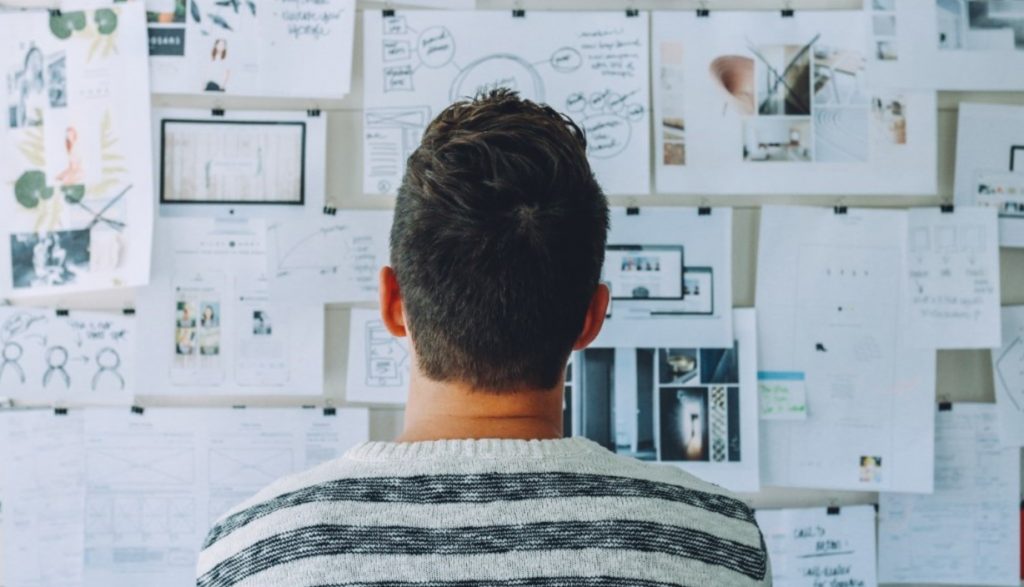
As close to reality as you can get! Right?
160 students were asked to first manage the transition from a linear to a circular strategy of a virtual e-bike manufacturer in the circular strategy game The Blue Connection.
You might wonder now, what is The Blue Connection and how is the use of a business game so revolutionary?
The Blue Connection is an immersed experience for students because they need to apply theory about business, management, and circularity in a virtual context which is based on a realistic scenario with realistic data and information at hand. We usually say: this is as close to reality as you can get.
Think again! With a brilliant idea, the coordinating professor Hedda van Raalte, did not stop there, but took it a step further, asking her students to apply the learned outcomes and experience they made in the real world. More about this later on, let’s zoom into the business game experience first.
Bridging circular theory with practice by using an advanced business game
Students were put in 40 teams, with each team consisting of 4 ‘managing vice presidents’: Sales, Finance, Purchasing and Supply Chain Management. The students could only take decisions in their assigned/chosen role in the business game. This pushed them to communicate with their teammates, become aligned as a team, and to set up a coherent strategy. The teams that did not do so, saw their results plummet!
With this element, not only hard skills in sustainable business, but also soft skills were crucial to succeed. Successful collaboration, alignment, and well working cross-functional teams are of utmost importance to business operations in general. However, for a change process i.e. ‘circular transition’ that applies event stronger. Hence, as a student you can now demonstrably say: Learning goal ‘soft skills’: check
The key challenge in the business game was to balance profitability and the Material Circularity Indicator (MCI). The MCI is a Key Performance Indicator (KPI), created by the Ellen Macarthur Foundation to measure circularity of a product. It consists of 4 dimensions: Input of virgin raw materials, lifetime of the product, usage of the product and unrecoverable waste.
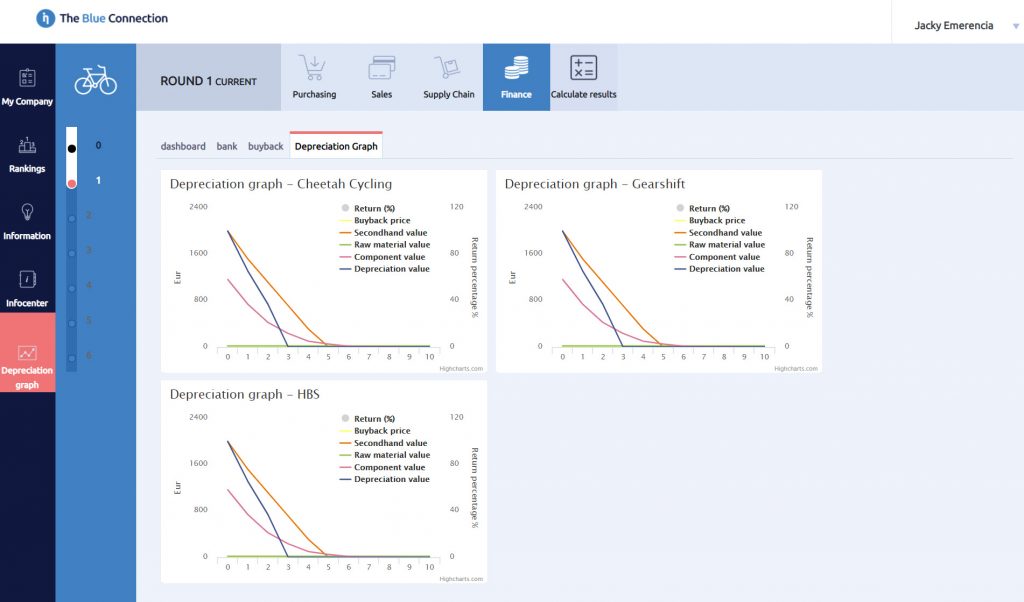
To achieve this goal, the teams needed to take decisions and manage the tradeoffs within each of the departments of the e-bike manufacturer. In a nutshell, student teams were deciding on the strategy, the suppliers to source from, the quality and recyclability of materials to buy, the cost and process of reusing, recycling and repairing – in other words, the sort of challenges that any real business currently has to deal with. Learning goal ‘applying theory’ check
While doing so, they were constantly benchmarked with the other teams, creating an exciting and competitive learning environment.
Taking the classroom to the real world: Bridging the academic with the corporate world
As stated above, the students’ journey was not over yet after accomplishing this task, since they had to find an actual company for which they could do an MCI business scan!
Students were able to find a total of 25 companies. Among them were all sorts of business cases: a chemical company (reusing steam), a bakery, a company from the port of Rotterdam, a hospital, several packaging companies, and from sectors such as furniture, food, steel/metal, electronic appliances, construction, sports clothing and others. If students couldn’t find a company, they used the recycling of coffee drab from the coffee machines of the Rotterdam University of Applied Sciences.
The task was to analyze the companies using the MCI and indicate opportunities on how to go more circular based on that analysis and their previous experience in The Blue Connection. In the analysis students also had to think of the question “Does your advice have a positive effect on the ROI and what will be the effect within 3 years? Learning goal ‘critical thinking’ check
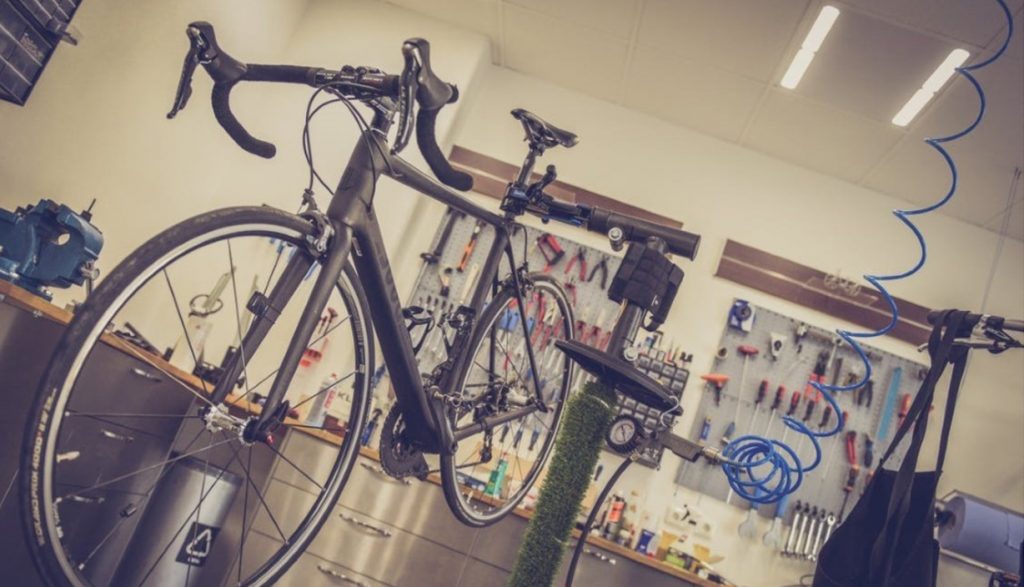
You might wonder what this has to do with producing e-bikes? In the business game they had a specific business case, true, but the experienced concepts are generally applicable! They could thus take the experience and knowledge they gained in the business game and apply it to a new business case, this time in the real world.
This encouraged the student teams to think about circularity in more practical terms, to really take the company perspective and realize: “This is the real world now!”
The most common outcome of the business analysis was to extend the product lifetime and oftentimes students looked at the specific product which already was (to some extent) circular, instead of critically looking at the products which weren’t yet circular. Let’s look at one of the cases…
The circular analysis: Diving into a specific example
One example is 7 solutions a company founded in 2003 that produces gas detection equipment (PDM). They have branches in Belgium, Poland, UK and Germany with customers all over Europe. The student team had advised the company how to improve their MCI from the 4 perspectives they experienced in The Blue Connection business game:
- Purchasing
Change the Chinese supplier, who produces the PDM and move the production to a greener and more sustainable production location instead. An option could be South Korea – the student team researched, that South Korea is far more sustainable than China, but still less than Europe. - Sales
Make long-term agreements with customers to provide services which extend the lifetime of the product. The lifespan of the product will have to be extended to reduce waste. - Supply chain manager
Be sure to have enough capacity to be able to recycle or refurbish products. - Finance
Balance the cashflow within the company. Income and costs need to be monitored closely, to avoid unnecessary costs and maybe use financial tools to increase the working capital.
Next to the advice, companies themselves also went through a great learning experience as they could reflect on what the circular economy can do for them: “How can we benefit from working more circular?”. In most cases they had not asked themselves this question before.
The next step would be to do a follow up with the companies and see if there were any consequences, changes or other effects coming from this project. To be continued…
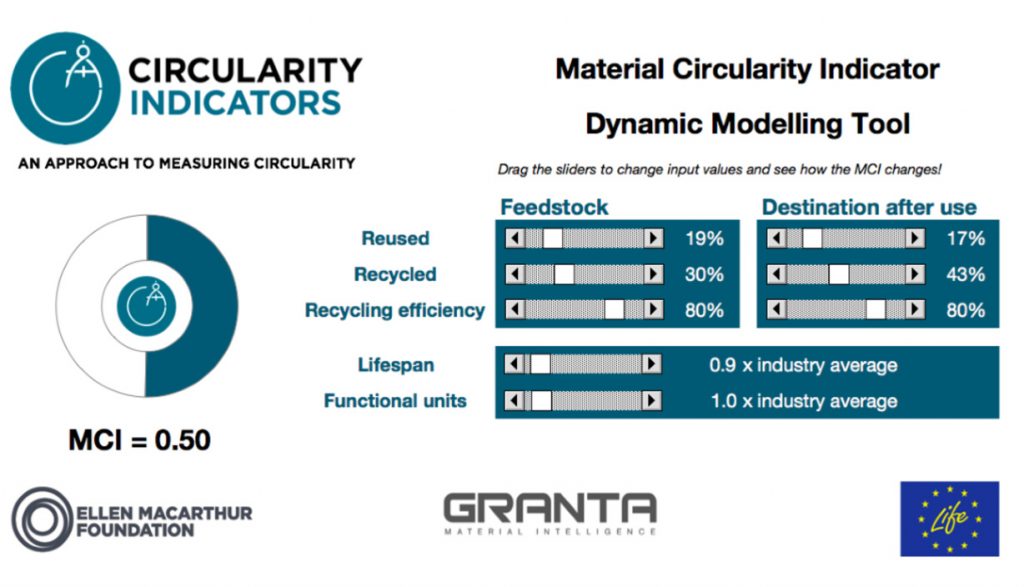
Conclusion: Graduating with “a circular experience in your backpack”
We hear young professionals often state two things: “I lack experience after graduating and I want to find a job where I have a positive impact”. With an inflow of 9500 fulltime students a year, RUAS is substantially influencing upcoming talent in various tracks, ranging from art to engineering.
Of the bachelor’s degree in Logistics Management, about 160 of the 500 students can now state that they have hands on experience in circular strategy implementation!
In the words of Hedda van Raalte: “They graduate having this experience in their backpack which made them aware of the circular opportunities. They experienced that increasing profit and circularity is possible and that is a wonderful outcome. Such experiences create the mindset of changemakers we need now, and in the years to come”.
We believe that a combination of:
- new & modern theories (e.g. circular economy theory)
- an experience in an immersive business game (e.g. The Blue Connection or others) with immediate follow up of the lessons learned in theory
- and applying it all in practice: the real-world application of the gained knowledge and experience
is leading to an optimal learning curve that prepares upcoming talent for the labor market and for the challenges that our global economy is facing.
This is why we, at Inchainge, are now also working on a circular economy textbook, which allows an even smoother setup of an integrated circular book-game-teaching concept.
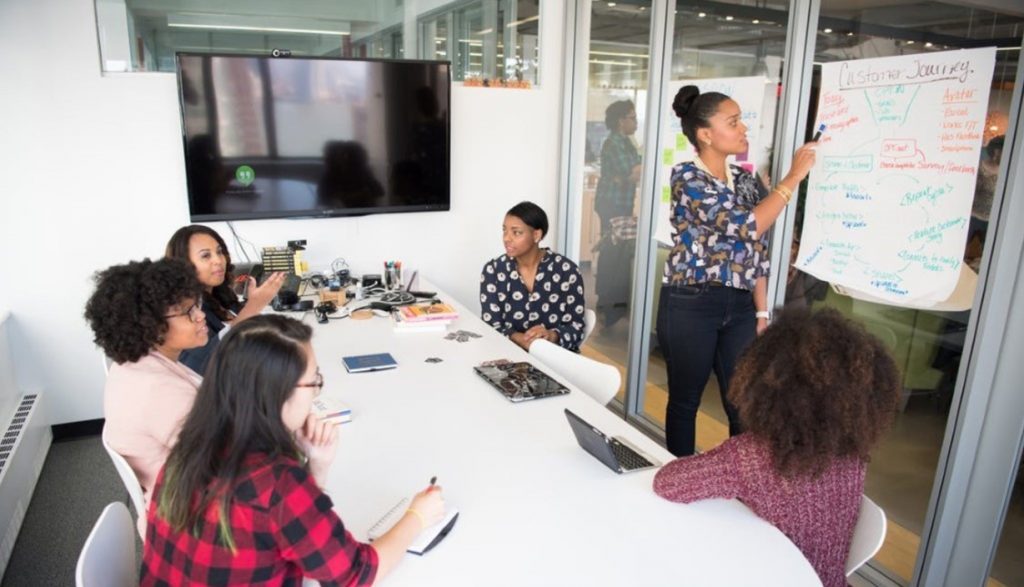
Programs like the one done by RUAS can be a great source of inspiration for other universities who want to offer attractive, engaging and state of the art curricula.
Keep it up Rotterdam School of Applied Sciences!
In closing
Are you a company who wants to participate in such a program? Reach out directly to Hedda (email: h.m.van.raalte@hr.nl ). The exercise will be repeated as part of a course around February 2021 and probably again in later semesters.
Are you an educator and do you think this, or a similar course setup, could also be something for your university? Feel free to reach out with any ideas and questions directly to us: education@inchainge.com
Big thank you to all participating companies: Koole terminal, Klockner, Municipality of Rotterdam, Cornerstone, v.s. Berg Banket, Bakkerij Dam, Hollander Barendrecht, Blozo metal ware, Nestle, ABC logistics / Best Fresh Group, Hogeschool Rotterdam Café, Gispen, DCMR, 7 solutions, Baynards, Adidas, Haga ziekenhuis, Hello Fresh, Maasstad ziekenhuis

